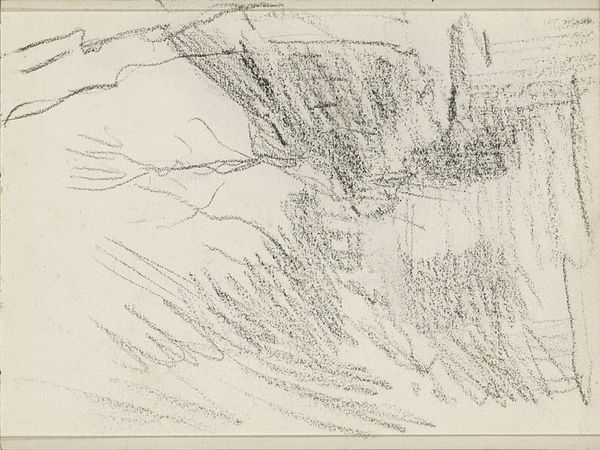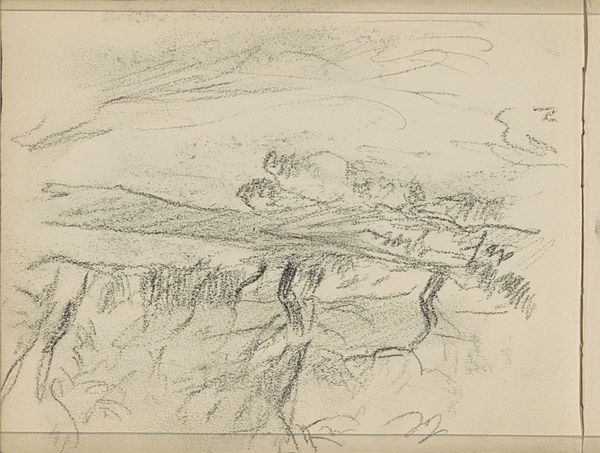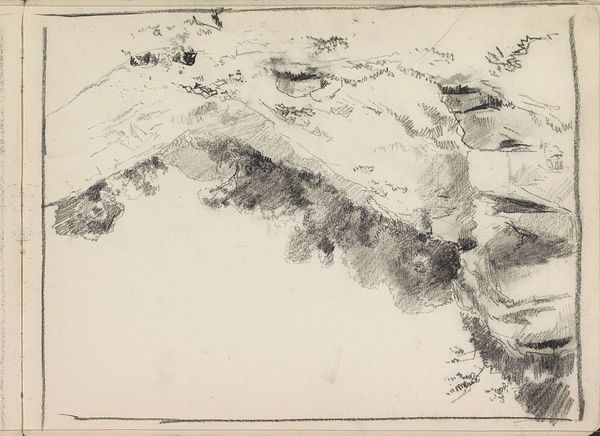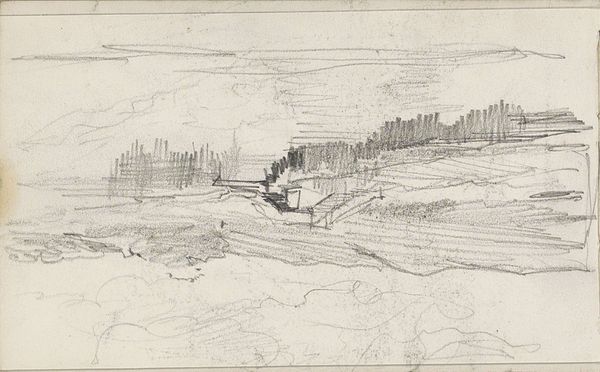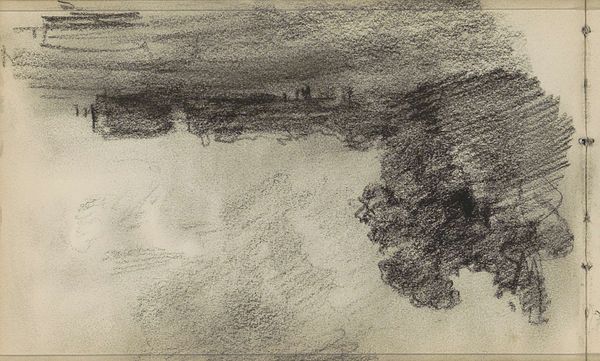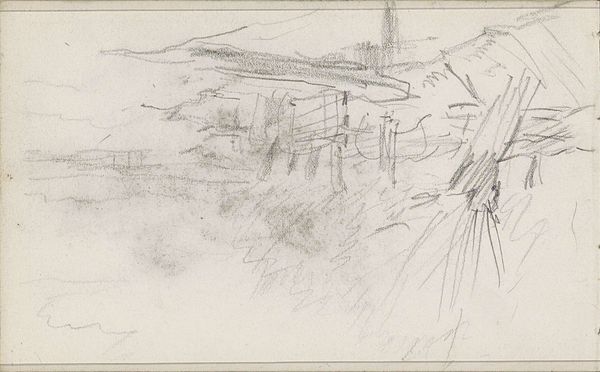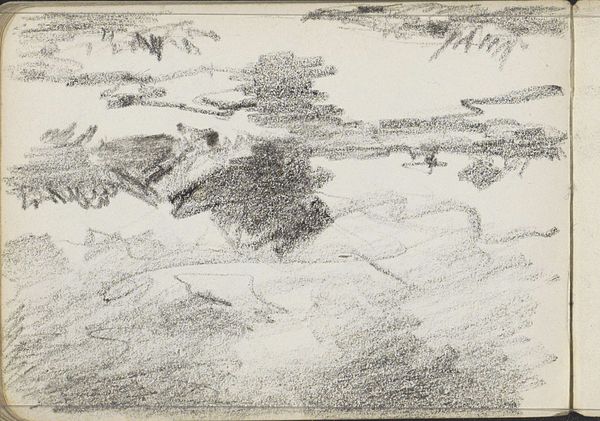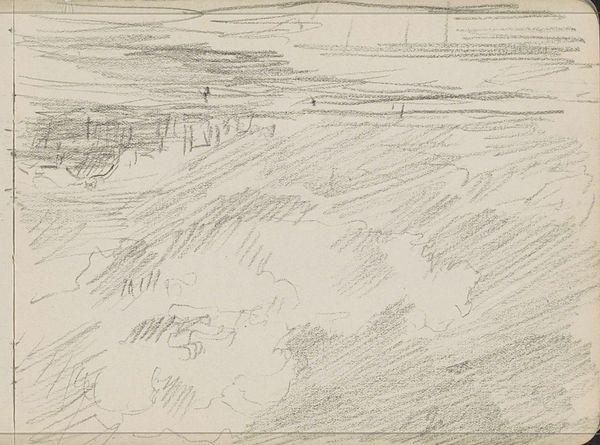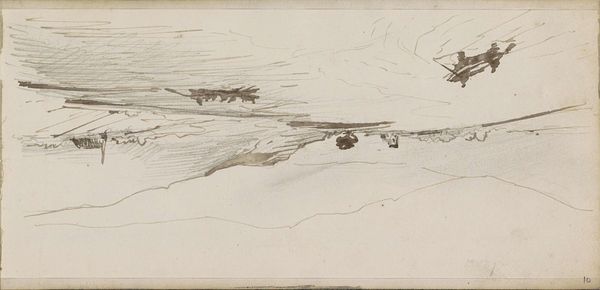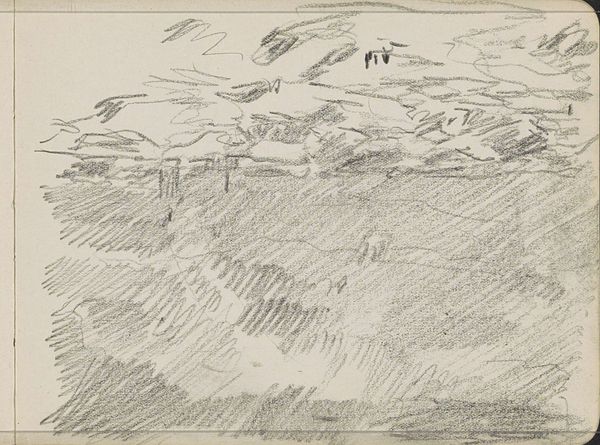
drawing, pencil
#
drawing
#
pencil sketch
#
landscape
#
pencil
#
realism
Copyright: Rijks Museum: Open Domain
Curator: The work we are looking at today is a pencil drawing titled "Stenen brug over het water te Valkenburg," or "Stone Bridge Over the Water at Valkenburg," created by Anna Catharina Maria van Eeghen sometime between 1893 and 1898. Editor: Immediately, I’m struck by the tonality—the almost monochromatic grayscale gives the work a quiet, contemplative feel. There’s a distinct emphasis on texture as well, in both the stonework and the foliage. Curator: It’s fascinating how the sketch captures a sense of place and time. Valkenburg, known for its picturesque setting, would have been evolving rapidly during this period due to industrialization and tourism. This drawing may represent an attempt to capture its remaining natural beauty before further development changed its landscape. Editor: I’d agree—there is a clear attention paid to the spatial relationships between elements within the landscape. Look at the layering of the bridge, trees, and distant hills and how the artist used varied line weights to create a believable illusion of depth in an otherwise simple sketch. Curator: The social role of landscape art in the late 19th century shifted from purely aesthetic appreciation to conveying national identity, personal experience, and environmental concerns. Here, Van Eeghen possibly attempts to communicate an individualized vision that also ties into larger cultural trends, focusing on capturing transient nature. Editor: And what could seem to be the transient or fleeting quality of nature—seen with quickly applied strokes and varied patterns—finds some sense of order with the rigid geometry of the stone bridge and its repeated rectilinear pattern. A good sense of tension that helps to make the artwork appealing to look at. Curator: Ultimately, works like this offer valuable insights into cultural values in that specific historical period as they showcase societal relationships with environment or technology, but also because it represents art as a tool of reflection or resistance. Editor: A very interesting point, certainly enriching the drawing far beyond its immediate, aesthetic qualities.
Comments
No comments
Be the first to comment and join the conversation on the ultimate creative platform.

